
Friuli-Venezia Giulia
The autonomous region of Friuli-Venezia Giulia is bordered in the north by Austria, in the east by Slovenia, (ex Yugoslavia); it is enclosed in the south by the Adriatic Sea, and in the west is delimited by the Veneto region. The region of Venezia Giulia covered a large area including the peninsula of Istria and territories up the city of Fiume, however after the Paris Peace Treaty signed in 1947, part of the region was transferred to Croatia and the remaining area of Venezia Giulia was annexed to and became part of a new region “Friuli-Venezia Giulia”. Since the earthquake of 1976, a change in the Friuli-Venezia Giulia economic field took place and in fact with the help of the central government funds, damaged factories were rebuilt into modern industrial plants, reconstruction of new roads implemented commerce, agriculture was stimulated, funds were available to buy new machineries, rural cooperatives were created and farmsteads were re-established. The region’s principal agriculture economy was transformed and today Friuli-Venezia Giulia is one of the most developed Italian regions with industries that comprise machinery, chemical products, furniture, textiles and food processing, including a thriving wine production and farming that turns out grapes, potatoes, corn, other cereals and fodder used to raise hogs and cattle. Commercial activities are thriving in Trieste, the capital of the region and an important center for commercial activities between countries of Western and Eastern Europe.
Trieste is a major center in the Mediterranean Sea for the trade and distribution of coffee; headquarter of Assicurazioni Generali, one of the biggest Italian insurance companies and active in shipbuilding and a major supplier to cruise and merchant ships. The other three provinces of Friuli-Venezia Giulia are Udine, Pordenone and Gorizia. In Udine, farming, food production, tourism and artisan activities are the main occupations. In Pordenone, besides farming, hogs and cattle breeding, there are many small and middle size enterprises in all fields of commerce. The province of Gorizia is dedicated to tourism and agriculture, mostly fruits, producing excellent grapes used in the production of quality wines.
Trieste
The city of Trieste has been, at one time or another, part of one of the regime that dominated this area: German, Latin, Slavic, Habsburg, Austrian, Hungarian, Italic and more….
The influence of these people can be found in the monuments, in the language, in their culture, in their traditions and in the Triestina Cuisine. Piazza dell’Unita’ is a remarkable open area surrounded by the City Hall and other government buildings; nearby a Roman amphitheater and ruins of Roman temples, and in the same area the San Giusto Castle, symbol of the city of Trieste. There are many places of worship for various religions, some recently built, some built back in time. The Stock Market Exchange is a neo-classic style building… the Miramar Castle was built for Archduke Maxime in the XIX century in Gothic style.
The beautiful beach, Spiaggia Sistinna and the Grotta Gigante, an immense grotto so big that it could contain San Peter Cathedral, are very interesting sites. Out of the ordinary is a ride offered with a funicular going from Piazza Oberdam to Villa Opicina which is about 1150 feet above sea level: it is a scenic ride that first goes around the historic parts of the city and then going up to the top of Mount Carso offering a panoramic view of Trieste, the sea around it and the Miramar Castle. The popular and numerous coffee shops in Italy called in Italian caffe’ or bar, were first opened in Venice, however, when – at the beginning of the eighteen century – they became trendy in Trieste, they rapidly grew in number with different characteristics from the elegant Venetian coffee shops.
The coffee shops or caffe’ in Trieste were each catering to a specific clientele; the caffe’ or bar was the place for top businessmen to discuss their affairs, other cafes were social circles for poets or musicians, writers, politicians, revolutionaries, soldiers, for secret lovers and for common people. Today you can have an espresso or a glass of prosecco at the Caffe’ degli Specchi which was opened in 1839, or at the Caffe’ Tommaseo founded in 1830 or the historic Caffe’ San Marco. Caffe’ San Marco, launched in 1914, originally was a meeting place for politicians and artists now is a showroom for local artists. Caffe’ Stella Polare was established in 1867, Caffe’ Tergesteo opened in 1863, to name some of the old bars. The walls, the furniture, the chic atmosphere of the cafes bring to mind the history, culture of this stylish city. Today the bars are more than coffee shop, in fact they evolved into gourmet restaurants and catering halls. The city’s surrounding area is hilly, but terraces have been built to make possible various cultivations. The red soil of this bare and stony land, rich in iron and limestone, which covers most of the province of Trieste, is dotted with farms and vineyards where dairies, vegetables and wines are produced for local consumption and for export.
The locally produced Tergeste, extra virgin olive oil, has recently received the title D.O.P. (Denomination of Protected Origin); also on the terraces, overlooking the sea, Sauvignon and Chardonnay wines are produced along with the typical indigenous red Terrano, the elegant white Vitovska, the dry Malvasia and the sparkling Prosecco. Cheeses are available fresh or aged, made with sheep, goat or cow milk: renowned the Tabor, in the shape of a small drum or the Jamar, a cheese aged at least four months in a jama, which in Slovenian translate cave; the fresh cheeses available are deliciously aromatized with wild fennels or with santoreggia, a wild herb that grows in the plateau. In the Carso region miele di Marasca, Morello honey and miele millefiori, wildflowers honey, are available in limited quantities; Prociutto del Carso, garlicky and aromatized with rosemary and laurel, is the hearty and tasty raw ham produced in the same area. Trieste and its province have a complex cuisine, with some dishes distinctive local and some with a significant Croatian, Slav, Austro-Hungarian and Hebraic influence.
Snacks are consumed standing up in one of the numerous small shops in Trieste called buffet: some snacks are prepared with boiled pork or with spicy sausages wrapped in a roll of pastry, also served in the buffets are other pork dishes, soups, stews, tripe and the characteristic caporai or rambasici which are balls made with beef, pork, rice, eggs and spices, wrapped in cabbage leaves and cooked in a tomato-paprika sauce. Offered as antipasto are Sardoni, fried anchovies, Sarde in Saor, anchovies marinated in a vinegar and onions sauce in addition to some tasty salami and hams, along with eggplants and other vegetables dressed in a sweet-sour sauce.
Among the first courses Jota, a beans and sauerkraut soup, the brodeto is a fish soup, or Lasagna al Papavero, made with the egg noodle kneaded with poppy seeds and layered with a tomato and fish sauce. Typical dishes regularly prepared in the homes and restaurants, to mention a few: the calandraca, is boiled beef stracotto (well cooked) with assorted vegetables and potatoes, Hungarian style goulash, prepared with veal, onions, tomato paste and paprika, also tripe stewed in a mild or spicy sauce, cevapcici, grilled spicy sausages and a gourmet dish the Sguazeto which is a stew of various types of meats – veal or beef- and include interiors. In Trieste enjoy assorted fried fish, mussels, clams, tuna, sea bass or other freshly caught fish, cooked in special sauces, or stuffed, baked or else broiled.
The ruby red wine Terrano, the local Malvasia or the white made with Vitovska grapes are good companions to the above dishes; the strucolo de pomi, apple strudel, the fritters called chifeletti, the popular kraften, similar to doughnut, or the fried potato dumpling stuffed with plum jam, go well with prosecco wine or the local Malvasia.
Gorizia
The province of Gorizia is protected in the North by a mountain range that shields the region from cold northerly winds promoting a mild Mediterranean climate all year, which favors tourism and agriculture. A variety of fruits and a large quantity of grapes are grown in the region. The high quality of grapes produced in the area between the Isonzo River and the Valle del Vipacco makes possible the production of over 100 million bottles of wine by the 1700 wineries, mostly located in this small territory. The Collio, North of Gorizia is renowned for the large production of Pinot, Cabernet and Merlot and for the superior and excellent white wines known worldwide. Here there is a great tradition of hospitable rural inns and restaurants where fine foods are offered and local wines can be tasted including the Pinot Bianco, white Pinot or the Ribolla Gialla, light- pale yellow, dry fresh wine with floral accents or the Tocai Friulano. Some more enjoyable wines to mention: Refosco red, Rosso d’Orzone, the varietal wines produced by Villa Russiz Winery, to name a few.
Gorizia was established as a watchtower controlling the nearby crossings of the Isonzo River and in Roman times as a fortress to guard the Via Gemini, a road between Aquilea and Emona. Gorizia is surrounded by a green belt with orchards and vineyards; it has many old and well-kept buildings, churches and historical sites. It is also a stylish and modern town and destination of Italian and Eastern European tourists, because of the mild climate, the ideal environment and of the facilities to assist a pleasant holiday. South of Gorizia an historical location, Redipuglia where an enormous monument and cemetery was erected to honor over a hundred thousand Italian soldiers killed during the first world war; further south the town of Montefalcone is known for its shipyard where large ships and cruise boats are built and for the abundant production of fine wines in the nearby plains of the Isonzo river.
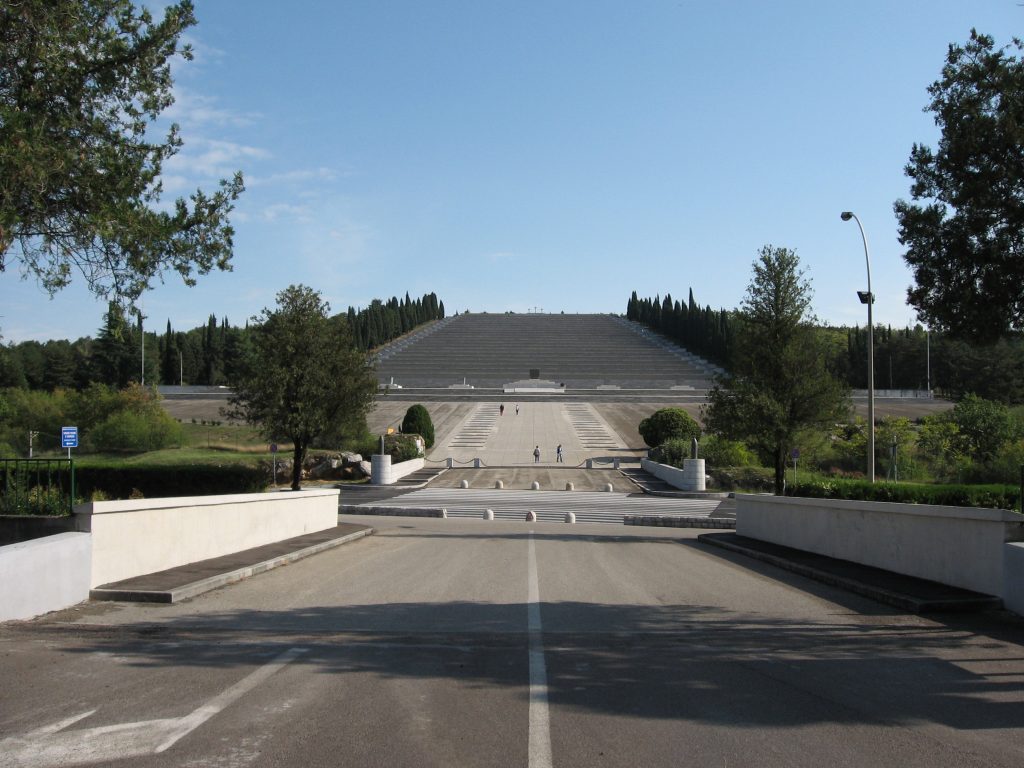
North-west of Gorizia, in the small town of Cormons huge quantities of the lightly smoked and sweet Cormons hams are produced; it is prepared with a special process requiring salting first and curing for twelve months in special vaults. The gastronomy of this province is influenced by Austro-Hungarian and Slovene style cuisine, with the traditional goulashes, the zlikrofi which are ravioli stuffed with potatoes, bacon and herbs, the blecs sort of pasta made with buckwheat, cut into irregular square and served with rabbit and chicken sauce or the cevapcici, grilled minced meats served with sour cream or cottage cheese. Typical of the region is the frico, a cheese and potato omelet, gnocchi di zucca, potato dumplings with squash, cialzon, ravioli stuffed with meat or with ricotta and spinach and sprinkled with grated smoked ricotta cheese, risotti with vegetables, potatoes dumpling stuffed with prunes, jota, soup made with fagioli beans and sauerkraut, sausages with polenta and for special occasions, roasted meats fragrant with cloves, cumin, and horseradish, served with zucchini and with chifel, croissants made with potatoes.
Cormons ham, speck, cured-smoked duck, smoked venison and local cheeses are habitually served as appetizers.
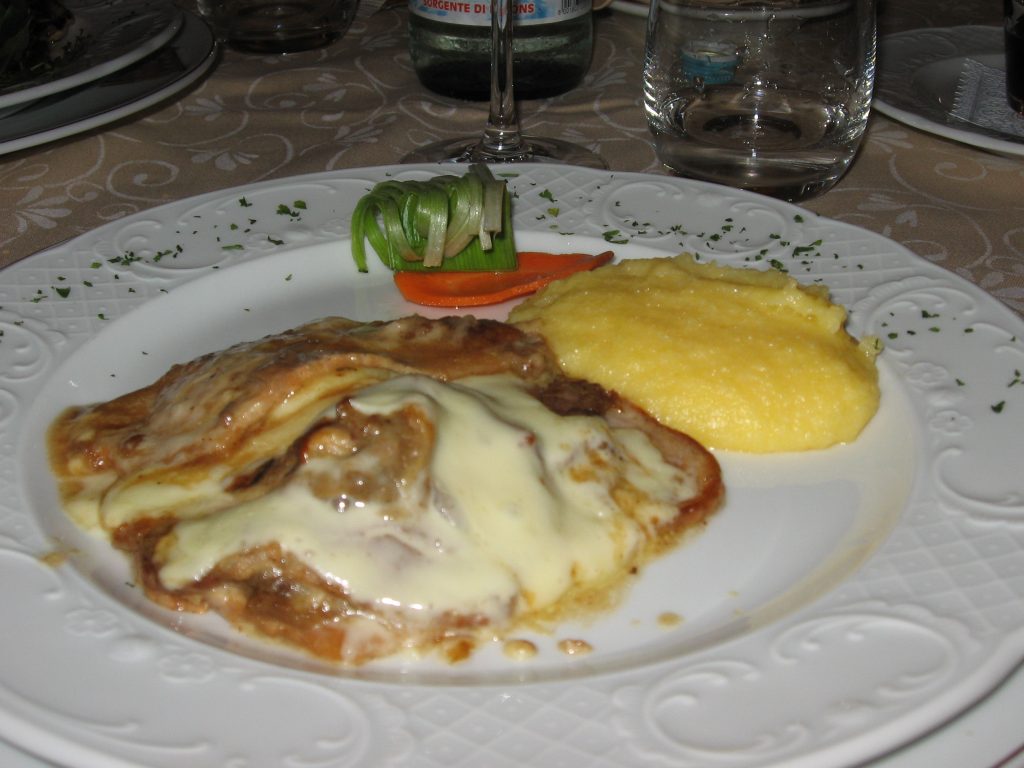
Exceptional salads are the exclusive Rosa di Gorizia, red-leafed lightly bitter chicory and the crispy canarino chicory served with apples and horseradish. Classic desserts are: buzzolai a ring-shaped cookie sweet-smelling of coriander and cinnamon, the potizza a roll of sweet dough stuffed with chocolate and dry fruits, and the very well-liked gubana, served soaked with grappa liquor.
The area bordering Slovenia produces a plum brandy called slivovitz. Grado called the Sunny Island, Isola del Sole, is a very popular and well equipped seaside resort, with modern and comfortable accommodations, beautiful sandy beaches and mild climate. The lagoons between Grado and Lignano Sabbiadoro are rich of all varieties of fish and full of royal seagulls, white herons and cormorants which make the area a paradise for hunters and sport fishermen; also commercial fishing and fish farming makes Grado the fish capital of the region. The local cuisine is mainly dedicated to fish: boreto alla Graisana, is a fish chowder made with turbot, sardines, prawns, squid, eels and any other type of fish available cooked with herbs and water until the water is fully absorbed, served with polenta and red Refosco wine.
Sepe sofegae is cuttlefish stew, sievoli sotto sal are mullets preserved under salt, white asparagus di Fossalon, polenta cooked with milk and water, sea bass, eels, gilthead called orate, are the main ingredients and gastronomic specialties offered in local restaurants. Annia and Latisana are local DOC wines; also Malvasia and Chardonnay are produced in the area. Apple strudel is baked in the Austro-Hungarian tradition, the patissa, phyllo dough stuffed with dry fruits and nuts can be pleasantly enjoyed with a glass of Malvasia wine.
Udine
Udine is one of the most important cities in the Friuli-Venezia Giulia and the largest province in the region.
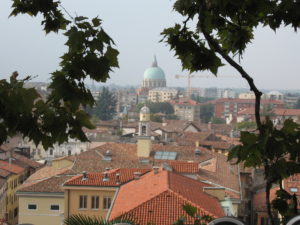
Udine is the cultural, historic and commercial center of the Friuli and it has been the region’s capital in many past historical occasions. Along with the province of Pordenone, most of the population, speak the Rhaeto-Romance language Ladin and Italian: all street signs, all official papers, are written in the two languages. The inhabitants living in Friuli are very proud of their tradition, their history, and their environment: they are hard working people and they have made the provinces of Udine and Pordenone two of the most productive provinces of Italy. From 1420 to 1797 the region of Udine was part of the glorious Venetian Republic. In Udine, in the Piazza della Liberta’ is located the town hall, called Loggia di Lionello, across from the clock tower which is a small version of the tower that stands in San Marco Square in Venice.
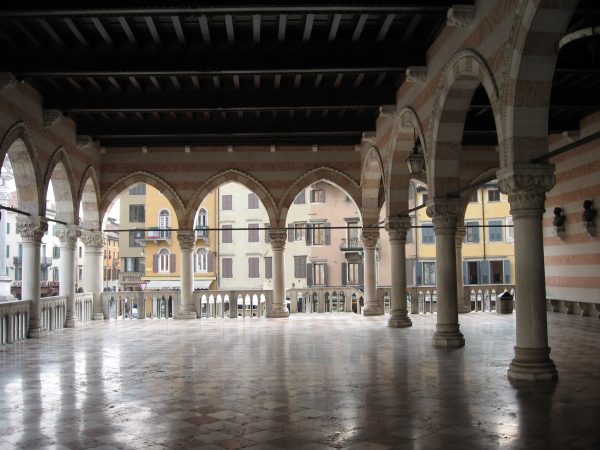
Loggia del Lionello
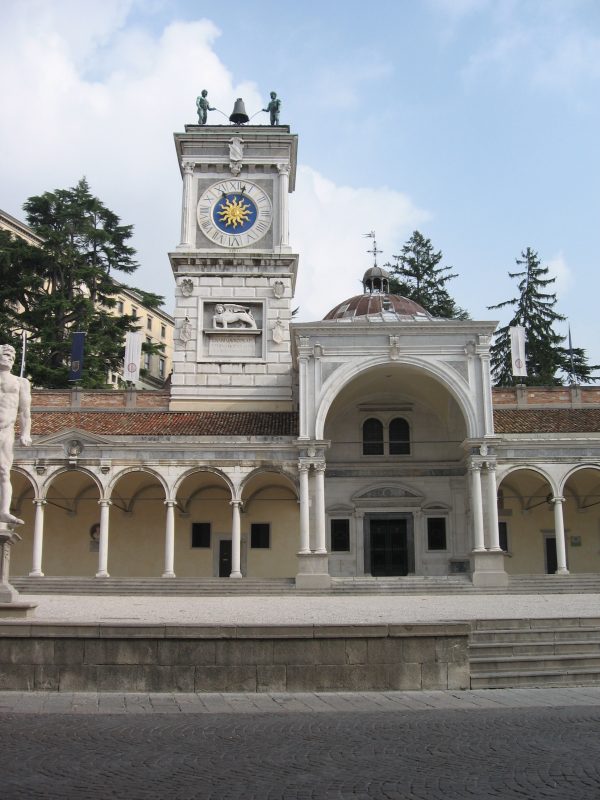
Piazza della liberta’
Noteworthy edifices are the Palazzo Patriarcale, built to accommodate the Patriarchs of Aquileia, the Church of the Purita’, the Cathedral, the Castle at the center of the city. Udine is also called the city of Tiepolo(a great painter of the 18th century) because in those structures can be admired a large collection of frescos done with extraordinary ability and with vibrant and luminous colors. In the IV century BC, the territory of Udine was populated by Celtic tribes; in the II century the Romans occupied the area and remains of temples, amphitheaters and Roman Markets can be found not far from Udine in the towns of Aquilea and Civitale del Friuli: two important Roman cities and commercial centers destroyed by Attila when the Huns invaded the Italian Peninsula in 452. The University of Udine is dedicated to researches in the scientific field and technology, in experimental, clinical and biomedicine, in financial science and humanistic studies. The epicenter of Udine is the Castle and the city expands in all directions with some large thoroughfares intersected by small roads with old and original buildings and small boutiques featuring locally crafted goods.
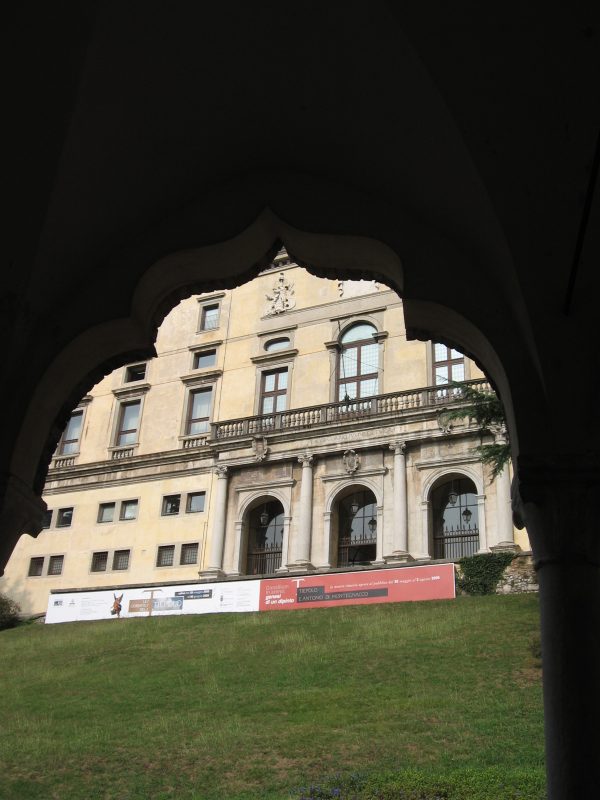
Also in those buildings and nearby vicoli, alleys, small restaurants and bars are to be found where local and international cuisine can be sampled. Rice or homemade pasta and beans, potatoes and beans are typical local soups; bisna made with polenta, beans and cabbage, risotto with asparagus, cialzons, ravioli stuffed with aromatic herbs are other excellent first dishes. Traditional main dishes are frittate flavored with the tasty scopit, the buds of a perennial herb which it is also used for risotti and potato’ dumplings; lamb stew, pork chops, poultry, in particular, the homebred Guinea fowls and geese, are served with polenta. The popular bravada, marinated turnips, stewed with fried garlic and onions and flavored with caraway seed, is served with muset, small spicy sausages similar to cotechino. The winter chicory, called lidric cul poc, is a pleasantly, lightly bitter tasting vegetable similar to radicchio of which the roots or poc are eaten: it is mixed in salads. Delicious the insalata Friulana made with lettuce and morsels of fried lard and in season with breaded fried artichokes. The frico is a specialty made with melted and fried Montasio cheese, simply made or mixed, like an omelet with onions or potatoes or apples.
In the province of Udine, each town, small or big has at least one bell tower, very singular, different and attractive, some are among the tallest in Europe. The staple food in the region is the polenta that is why corn is cultivated extensively far and wide. Each town is famous for their own cooking specialty, with wild game on the top of the list. Wine produced in the Colli near Udine include Merlot, Ribolla, Tocai, Riesling, Refosco, Pinot, black, white and gray, the fine dessert wine Picolit and the delicious and less expensive Verduzzo of Romondola.
In the north near the Austrian and Slovenian border lies the town of Tarvisio. It is a shopping center paradise for bargain hunter from the nearby borders; it is also possible to savor in one of the many eateries, traditional Friulan dishes or to sample delicious international cuisine prepared by renowned chefs. Since the Eurozone was established in 1985 shopping has become less primary and in Tarvisio and the near town Sella Nevea, tourism has been implemented with winter and summer sports and the creation of the most up to date facilities including luxury hotels, rural inns, bread and breakfast and a large trail system, backcountry ski trails, schools to learn to ski, and for the summer season trekking and rock climbing instructing. High in the mountains, the town of Saurisis called “la perla di Carnia” the jewel of Carnia, because it offers attractive features for winter or summer activities, great accommodations, a clean environment and natural beauty.
Prosciutto di Sauris, cured sausages and the local freshly brewed beer are among the culinary specialties of the town. Not too far from Udine in the town of Tavagnacco where asparagus is produced in great abundance (typically cooked with rice or as a side dish); the territory of Natisone valley is famous for DOC wines like the Colli Orientali del Friuli and for the gubana a cake made in Cividale consisting of layers of buttery pastry dough, filled with a mixture of nuts, and at times dry fruits and chocolate. On the outskirts of Gemona del Friuli in a rustic trattoria, hare and venison cooked in salmi’, a spiced wine sauce, can be sampled in season served with the obligatory polenta.
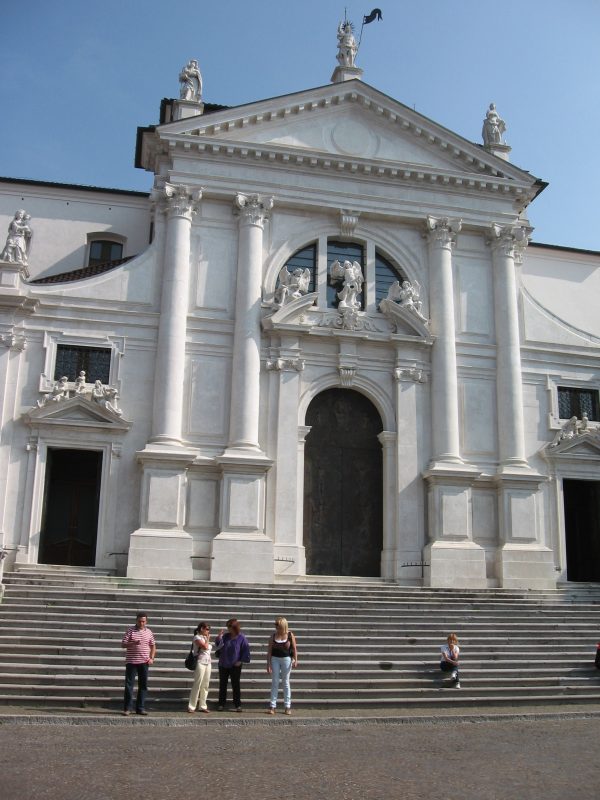
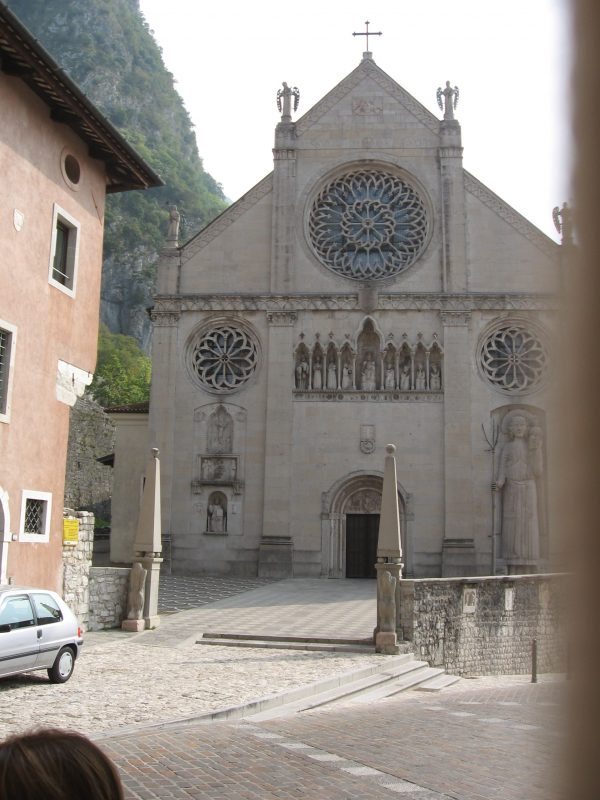
Cjalzon, stuffed ravioli finished with a butter and cheese sauce, is served as the first course. Homemade pasta dished up with porcini mushrooms, or gnocchi in a delicious and piquant sauce and mixed grilled meats, sausages, meat stew and other specialties are also part of the menu’.
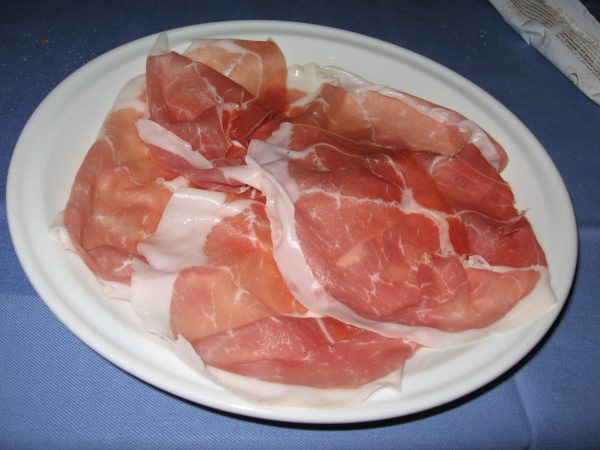
Hand cut San Daniele Prosciutto
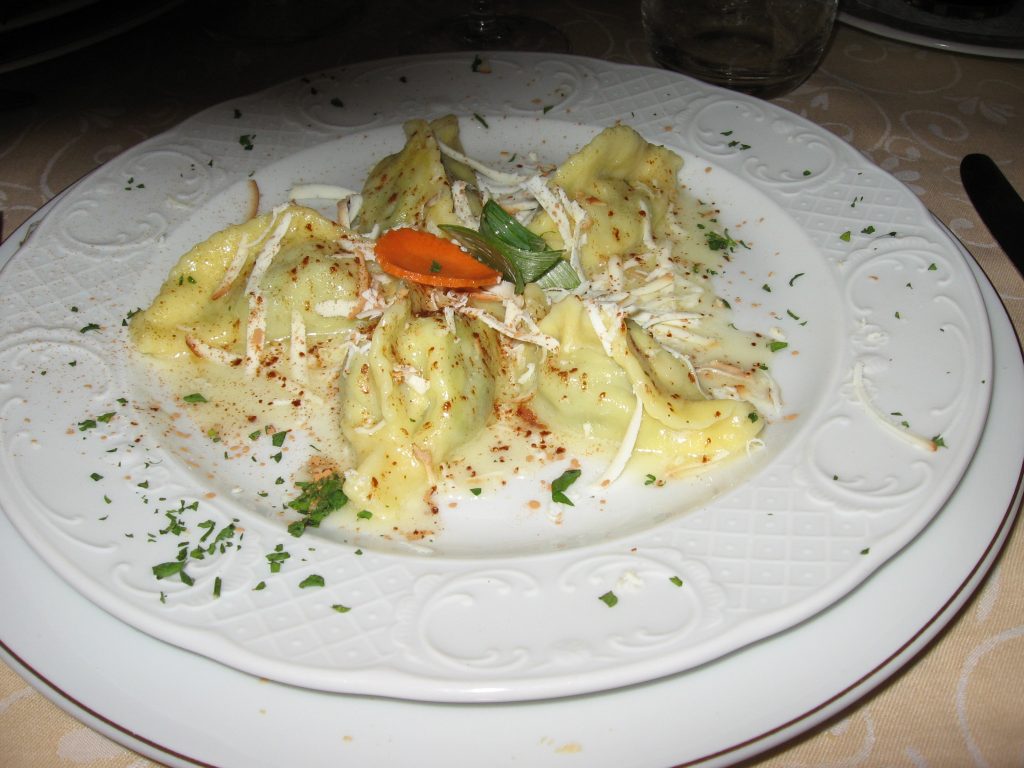
Ravioli friulani
The area and the town of San Daniele are renowned for the Regina di San Daniele, the trout raised in the clean and fresh waters of the Tagliamento River, filleted by hand and smoked; the San Daniele prosciutto is also made in this town, where currents of fresh air from the north and temperate air from the Adriatic Sea, meet to create an ideal environment for curing the meats. The hams are seasoned, salt-cured and allowed to air dry in special buildings where windows are open or closed to allow the right ventilation necessary for a slow curing of the hams. The end product is the most unique, extraordinary and delicious prosciutto I ever tasted! When I was there, good bread, freshly hand-cut San Daniele prosciutto and a glass of wine was one the most unforgettable lunches I ever had !…
In Pagnacco, the trattoria “Al Cjavedal”, which means fogolar, the hearth, is an attractive typical Friulan restaurant. Antique household utensils and field working tool are displayed all around the premise, however what makes this eatery unique is the seasonal menu’, that offers dishes in season, fresh vegetables grown in their own backyard, homemade pasta, including all types of ravioli, also game, lamb, pork, poultry and many typical Friulan dishes, the omnipresent prosciutto San Daniele and an assortment of cheeses. Dinners are complimented with good wine from the well-furnished wine seller, and to finish delicious desserts are offered and a glass of first quality Grappa del Friuli to choose from a wide selection.
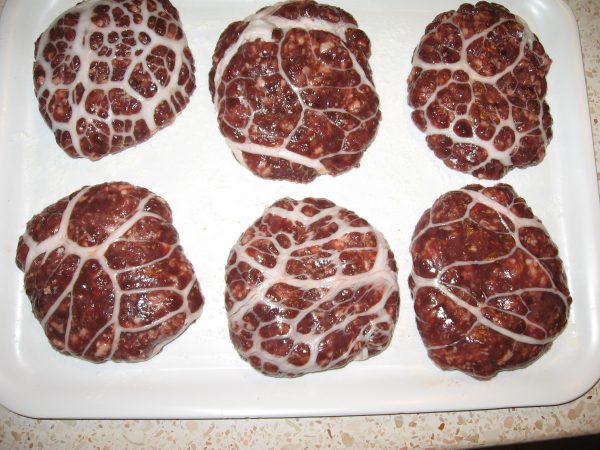
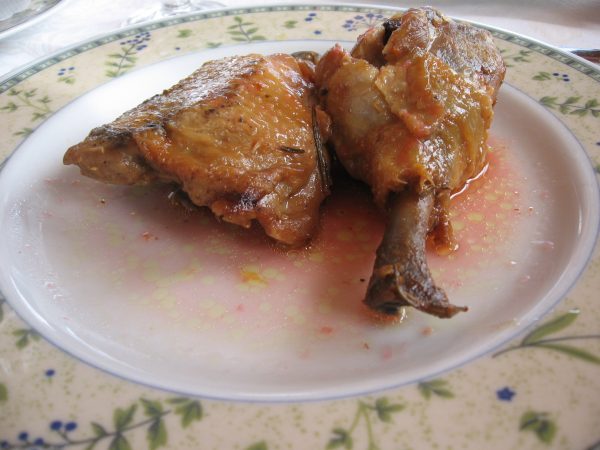
On the vicinity of Pagnacco, in a multi-room trattoria, Al Cacciatore (The Hunter) grilled meat dishes are prepared in an open fire using the traditional and old fogolar, and in the kitchen tagliatelle with mushrooms, crespelle, stuffed cannelloni, pasta and fagioli, gnocchi with meat sauce, are cooked with care in the best Friulan tradition. Game, free range chicken in a variety of sauces, baccala’ with polenta, fresh vegetables from their own garden, delicious homemade apple or almond cake, good local wines, can be part of an unforgettable and sumptuous dinner. Aquilea was founded and used by the Romans as a commercial and military base. The ruins of Forum, the mosaics and old roads are among the marks left by the Romans along with the Latin language spoken by most of the people and considered the official language of the city. Aquilea is the seat of the Aquilean Catholic University; its population is very religious and the Patriarch, a priest or a Bishop is elected for life with power of a monarch. Pigs, geese, and fish are processed and preserved, using salt in the Roman custom or smoked in the Nordic and German tradition. Salami, sausages, bacon, cured ham and goose products are the bases of the local cuisine, and for the seafood lovers sea bass, eels, sardines, gilthead, and a variety of fish from the local water can be enjoyed with a zesty local white wine or if red is preferred the Refosco of Aquilea, which is a first-class wine that also goes well with rice, pasta or meats.
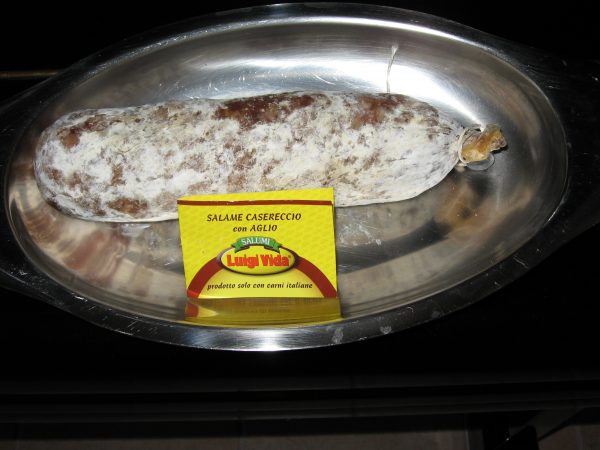
Facing the Adriatic Sea and next to Grado the splendid seaside resort of Lignano Sabbiadoro is famous for the wide and long golden sandy beach. has tourist accommodations to fit every budget; a marina with fancy and expensive yachts docked at its piers and an elegant surrounding area with chic boutiques and fine eateries ready to offer an unforgettable dining experience.
Pordenone
The province of Pordenone is located next to the province of Udine on the other side of the Tagliamento River. The economy is based on agriculture and in small and medium industries in the manufacturing of furniture, paper, chemicals and in the production of silk. The Parco Naturale delle Dolomite Friulane is a wild area of the province of Pordenone, enclosed by the Tagliamento and Piave rivers, high in the Dolomites Mountains, overlooking the valley below. The area has no paved roads or towns; interesting the geological structure of the rocks, and the protected wildlife of which the park is rich. In the valley, the main crops are corn, wheat, sugar beet, soybeans, fodders and grapes for the production of wines. Efficient hog and cattle breeding are one of the major activities in the territory: a variety of dairy and milk products, fresh cheeses, dry-salted, smoked ricotta, and a selection of cured meats, including, hams, sausages, and blood pudding are produced.
Polenta, gnocchi and tortellini are their favorite starchy foods, served with butter, mushroom or vegetable sauces. Local dishes like the patina, meatballs made with chopped chamois, or with goat meat and garlic, wine, salt and pepper; the brusaola, thin sliced air-dried cured meat, are homemade and consumed besides the other regional specialties. Muset with bravade, is sausage made from seasoned pork rind and meat accompanied with white turnips marinated in vinegar, the jota is a hearty soup made in this province with fagioli beans, potatoes and cabbage, and the famous Friuli frico is made with fried cheese, onions and potatoes. Also among the first courses: risotti with herbs, mushrooms or rice and fasoi – beans, and homemade pasta con torcio, macaroni with pork ragu’ sauce of muset. Carne in tercia, sautéed beef tenderloins with roasted vegetables, veal shanks roasted in wine sauce and herbs, served with turnips and potatoes, and wild boars, deer, hares, pheasants, mallard barbequed or marinated and finished in umido, stewed.
Sarde in Savor, anchovies are marinated in vinegar and onion sauce and heels, trout and stockfish are prepared in many and delicious way. Biscotto Pordenone, flour, corn flour, almond, sugar, grappa and lightly salted, the bussolai are made with flour eggs, butter, sugar, lemon skin and grappa. Pears cooked in red wine are called Pelorai, the vin Brule’ is red vine served hot with thin slices of apple, orange and lemon peels, clove, cinnamon and some sugar. Large quantities of D.O.C. wine are produced in the area: Pinots, Sauvignon, Riesling, Traminer spumante; and the reds Cabernet Franc, Merlot, Grave, Refosco, Novello and many other varietals produced by small wine culturists.
